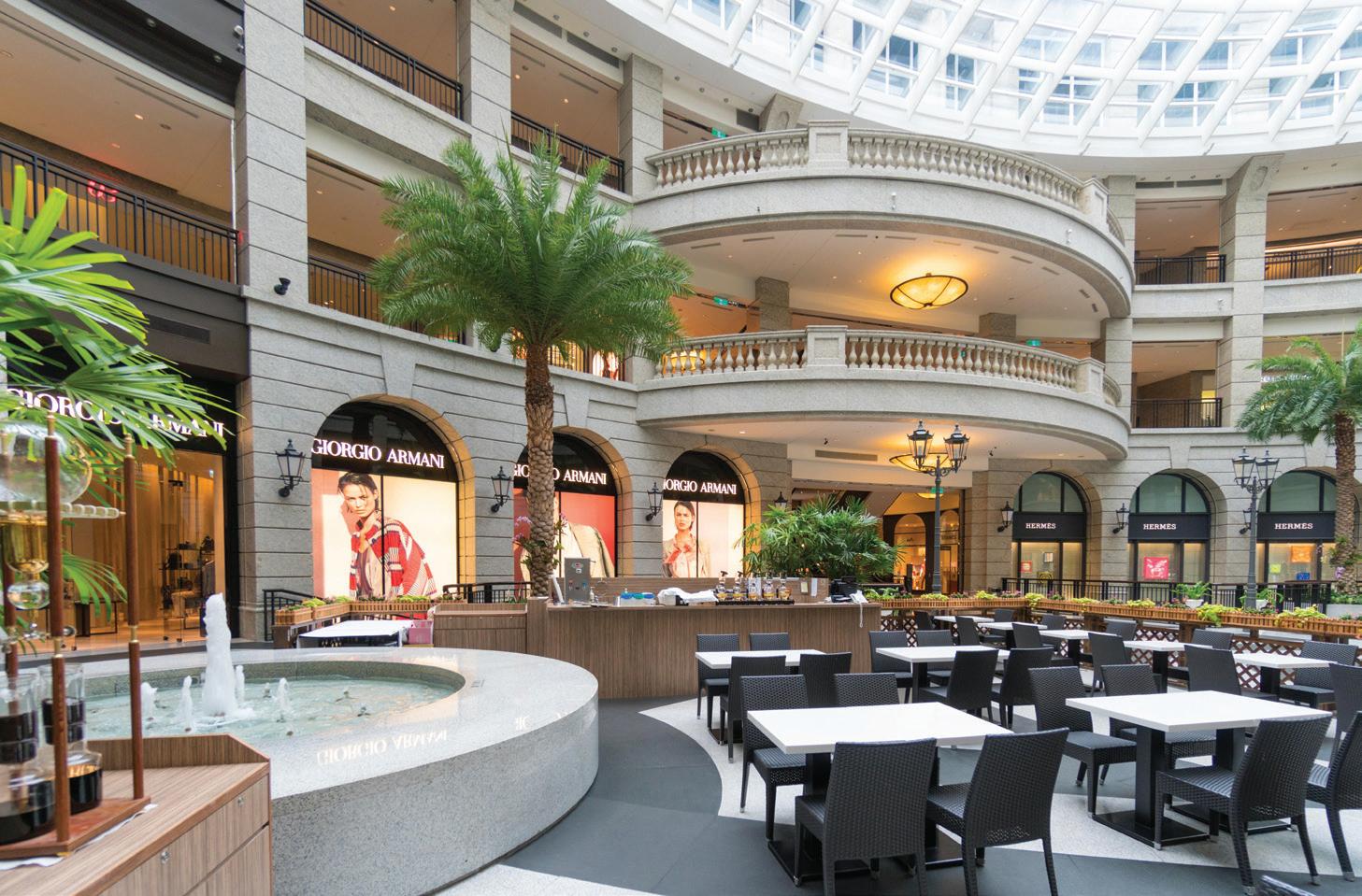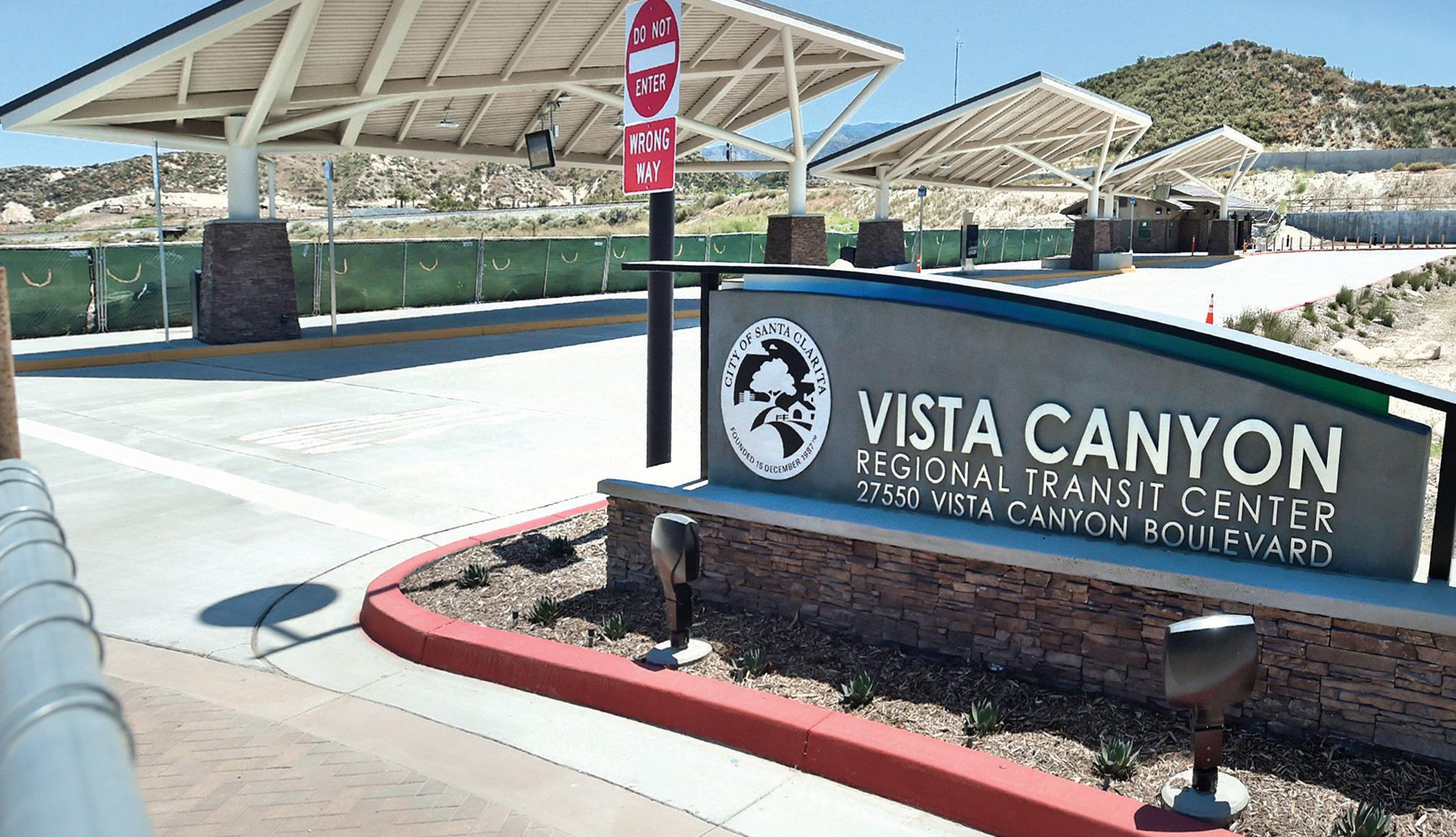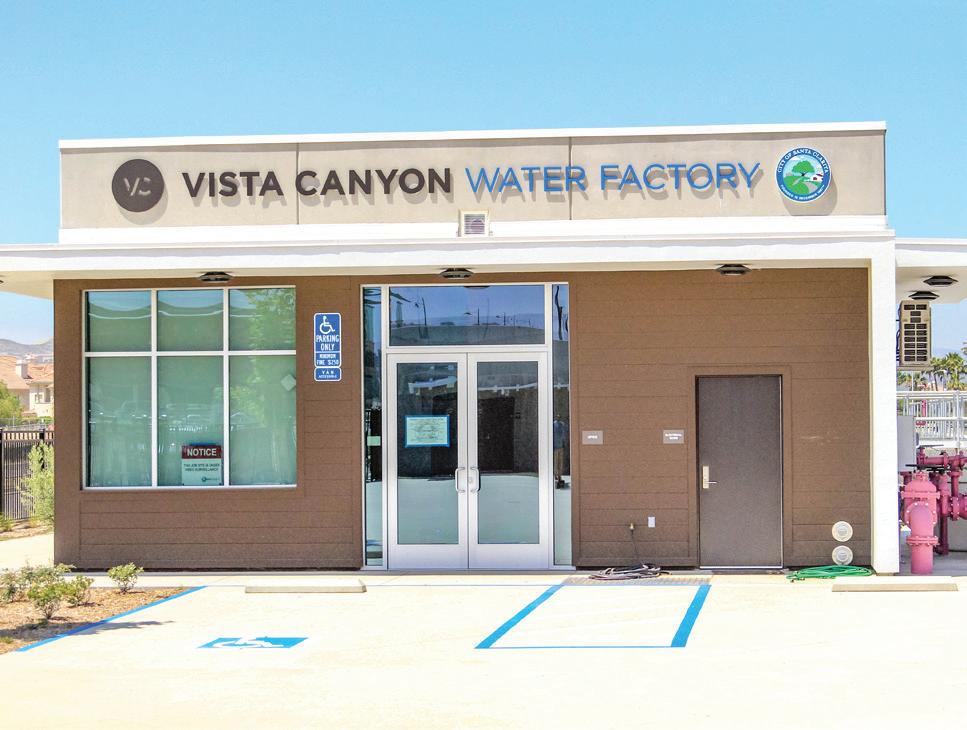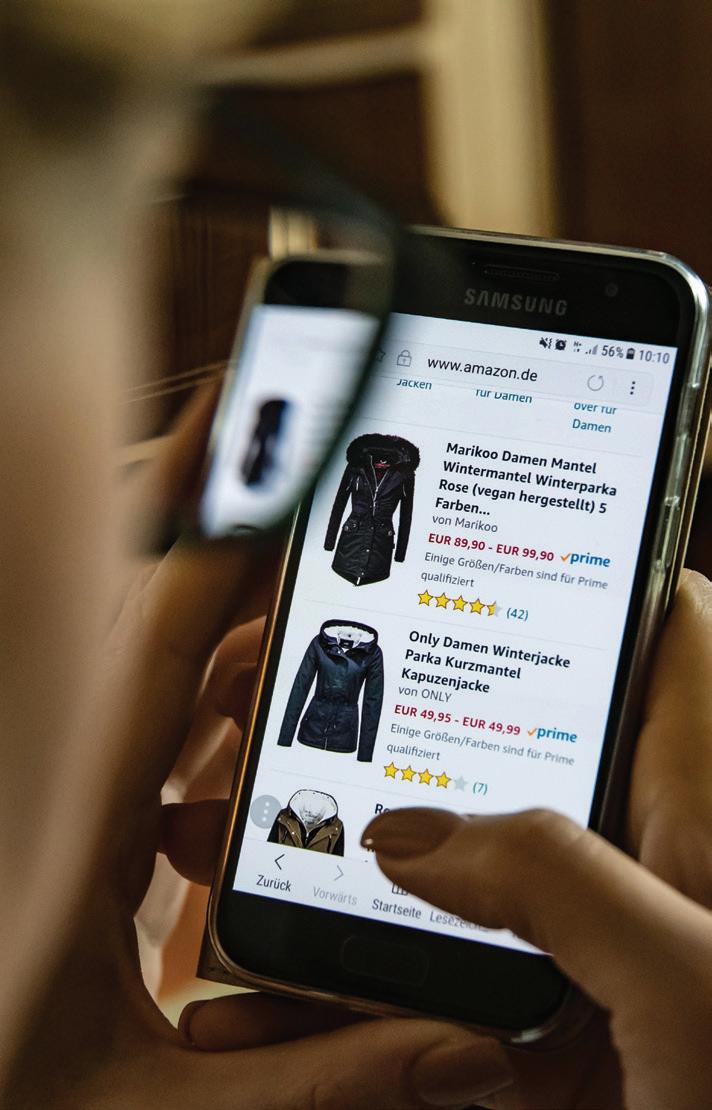
18 minute read
Paul Raggio: Getting Customer Service Right
Getting Your Customer Service Right
BY PAUL RAGGIO
Advertisement
SCVBJ Contributing Writer
Recent experiences reminded me how important it is to get customer service right in your company, which all centers on attitude, behaviors, and actions! I had an air conditioning and vanity light issue with my 2021 car, still under warranty, and took it to the local dealer for service. I made an appointment online, showed up on time, and waited fifteen minutes to check-in.
Several service people walked by, never acknowledging my presence until I cornered one of them and said I had an appointment to fix some issues with my car. The service representative was retrieved, and I explained the problems to her and told her I would wait instead of leaving the vehicle.
She immediately told me they were way behind because of service technicians calling in sick and wasn’t sure my car would be ready in two hours.
Forty-five minutes later, she returned with the good news that nothing was wrong with my car. I drove it off the lot and discovered the same issues I reported to her were wrong two hours ago and still existed.
During work hours, I called the service department and found they use an answering service to screen their calls, and I could not get through to the service representative who checked my car in to tell her the technicians fixed nothing.
I made an appointment for another day online with the same service representative, showed up on time, waited another fifteen minutes to be seen and told her the problems still existed.
She stated how can they, all the codes they ran on the car showed no issues. Get me the service manager, I said. I explained everything to him and left my car for him to work on for the day.
Four hours later, I picked up my car, the issues fixed and the diagnosis was recharging the freon and cleaning and adjusting the connector on the vanity light.
Every company I associate with always states customer service is essential to their operation. Often, you’ll find it as a value statement prominently displayed in the customer collection area.
However, how much of it is lip service? Does your organization believe they serve the customer and do they demonstrate that through their attitudes, behaviors, and actions?
I recently talked with a COO about a challenge with her employees. How do you get them to care about our clients, she lamented? I know my team cares. She went on; however, the clients just don’t experience it.
Both management and leadership actions will address the challenges.
From a management standpoint, do you have documented procedures and processes as part of a customer service system that eliminates their inconvenience and maximizes their delightfulness?
The auto service department’s case starts with the customer dropping off their car. Are customers attended to immediately, and is the customer service representative courteous and caring?
Upon a customer departing, do they check with the customer to see if their service exceeded the customer’s expectations and, if not, what can they do better. These skills can be trained during the employee’s onboarding process and continuously coached throughout employment.
From a leadership standpoint, are supervisors present and engaged with how their employees interact with customers? Are they observing, coaching, correcting, training, and reinforcing the philosophy we serve our customers? Are their attitudes, behaviors, and actions worthy of modeling?
If the answer is no, customer service is not resident in the organizational culture. Leaders must care, be present and demonstrate serving customers is a company tenet.
Employees model their supervisors’ and company leaders’ attitudes, behaviors, and actions which spawns the cultural climate that values serving customers.
It was clear that the service supervisor rarely observed, coached, corrected and trained their service representatives at the dealership I patronize. I’m obligated to contact and express my disappointment and the inconvenience I experienced working with their team if I want to see them change. If my feedback goes unwelcomed and positive change doesn’t result, I’ll find a dealership service center where customer service is more than lip service.
Poor customer service equates to low customer retention and referrals. Customers always vote with their feet.
Serving customers must be a company tenet, and ensuring leader and employee attitudes, behaviors, and actions reflect the importance of this tenet is how you delight customers and earn their patronage. Do it well enough, and your customers become raving fans and serve as a referral source for your thriving business! This is how you lead, think, plan, and act. Now, let’s get after it!
Retired Col. Paul A. Raggio is co-owner, with his sister Lisa, of One True North INC Leadership and Business Coaching Solutions. For more information, visit onetruenorthcoach.com.
MALLS
Continued from page 11
of the local community — a place to share quality time with friends and family, not just wolf down a meal at the food court.
The King of Prussia Mall, located 30 km from Philadelphia, has a Morton’s Steakhouse and Capital Grille. The Crystal Cove shopping center in Newport Beach has more than a dozen upscale restaurants, including Tamarind of London and Mastro’s Ocean Club.
On the tenant mix front, innovative malls are strategically rethinking the types of stores that consumers will respond to. Anchor tenants that drive traffic are still key, but we also see a new emphasis on a curated mix of smaller stores that add a sense of novelty to the mall offering.
Additionally, some malls are making greater use of temporary, flexible spaces that can accommodate different stores over time. Pop up stores, showroom spaces and kiosks provide customers with a sense of the unexpected and give them a reason to treasure hunt.
Finally, malls are overcoming the commoditization problem by focusing on specific consumer segments and/or creating specific zones within the mall that allow consumers to find an area that caters to them.
In the Dubai Mall, for instance, “Fashion Avenue” is an area dedicated to luxury brands and services tailored to the upscale customer, including a separate outside entrance and parking area. In the 7-story CentralWord mall in Bangkok, home décor is on the 5th level, technology on the 4th, and fashion apparel on 1-3. This approach also represents a way for malls to ensure that customers don’t get lost inside the ever increasing square footage of malls. 2. Transforming the mall experience by leveraging technology and multichannel strategies.
The digital transformation of retail is not all bad news for malls. On the contrary, it presents new opportunities for malls to engage consumers throughout their decision journeys. There are three primary ways in which malls are leveraging technology:
First, they are extending their relationships with customers to before and after the mall visit. This is about engaging customers through compelling content and creating deeper bonds with them through social media and proprietary sites and apps, as well as loyalty programs.
Social media can be used, for instance, to create buzz about new tenants or solicit ideas from consumers about ideas for new stores. One mall company has utilized segmented Facebook communication to speak to different communities, such as different geographies or interest groups or specific malls.
Mall loyalty programs can provide the means for malls to establish a direct relationship with customers that goes beyond each visit to the mall, while allowing malls to collect precious information about customers.
Just like retailers, malls should reach out to their customers with customized offers, gift ideas and other targeted advertisements based on real time intelligence and location-based marketing. While malls face the challenge

Malls are offering dining options beyond a food court experience. of not having direct access to shopper purchase data, this can be overcome by inducing shoppers to use their smartphone to scan purchase receipts in exchange for points that can be redeemed for concerts tickets, books, discount vouchers for participating merchants, free parking or invitations to events (e.g., a fashion show).
Alternatively, technologies such as face recognition, location-based mobile ads, and beacons are already being successfully applied in order to identify and establish targeted contact with repeat customers. Such technologies are also valuable for gathering consumer behavioral data from which malls can glean useful insights.
Secondly, malls are using technology to transform mall usability as a means of improving customer satisfaction. There is ample opportunity for malls to decrease customer pain points, while simultaneously creating entirely new delight points.
Technology, for instance, can be used to address one of the biggest challenges shoppers face at the mall — finding parking. Sensors located in parking lots detect how many spots are available on each level and give visual indicators to drivers. Once within the mall, mobile apps can offer quick, easy guides to help shoppers find what they’re looking for at today’s increasingly large and multi-level malls. Thirdly, malls are utilizing digital capabilities to take the shopping experience to the next level. It critical for malls to take a more active role in shaping the shopping experience, either by acting more like retailers or by partnering with them. Mall players are experimenting with a variety of different business models to make this happen, but there are no certain winners yet. To introduce elements of e-commerce into the mall, Taubman partnered with Twentieth Century Fox to put virtual storefronts — “Fox Movie Mall” — in at least 18 luxury malls. There, shoppers can purchase movie tickets by scanning a QR code with their smartphone. As the barriers between online and offline blur, some mall operators are venturing into online with a complete virtual mall offering. In 2011, the Australian mall company Westfield launched an online mall (and later a mobile app) with 150 stores, 3,000 brands, and over 1 mil-
Cinema Park is a Mixed-Use Center
BY REENA NEWHALL
Cinema Park
The concept of Cinema Park began almost thirty years ago in 1993 when a group of small business owners/entrepreneurs banded together to build their dream center. The building was a mixeduse project with retail on the first floor and offices on the second floor.
Cinema Park prides itself on having a unique variety of noteworthy tenants who are considered leaders in their fields, namely StoneFire Grill, Tranquility Salon & Spa, 20/20 Optometric Eyecare, Alexander Villar DDS and A Chorus Line Dancewear & Costumes.
We welcome three new tenants with great pride — Perfect Tux, Jewelry World, and Karla Grgas LMFT — to our Cinema Park Family.
Perfect Tux was founded in 2016 by Steven Burton, who talents began to shape when he began working on custom pieces for clients, tailored to suit their every wish and fantasy.
Along with his wife, Ani, Jack has run Jewelry World as a staple in Santa Clarita since 1985. With a new location at Cinema Park and a boutique environment created by their architect son, Kirk, Jewelry World is open for business.
Specializing in custom design and repair, Jewelry World offers luxurious in-storeshopping for rings, pendants, watches and more. A familyrun business through-andthrough, Jack and Ani are proud to once again serve the SCV Community.
Karla Grgas is a licensed marriage family therapist with 16-years’ experience, providing mental health therapy to children, teens, adult, families and couples. She’s a Santa Clarita native with over 10 years’ experience serving the community. She specializes in anxiety, depression, life transitions and gender-affirming care. She can help navigate parents through the local school system by collaborating with school staff to better support the child’s academic, behavioral, and emotional challenges. Karla Grgas offers a free, 15-minute consultation to prospective patients at (661) 714-8609.
Cinema Park, Valencia is located at the intersection of Bouquet Canyon Road and Cinema Drive.
worked in the formal wear industry for nine years. Fed up with lack of diversity and selection in the tuxedo industry, he established Perfect Tux online, and has served 26,000+ customers to date. His on-line success encouraged him to open his first retail showroom in Valencia.
Perfect Tux was made for the gentleman who chooses to be fashionable, but desires his individual personality to shine through. Besides over 100 different styles for men, Perfect Tux also sells boys tuxedoes, suits, shoes and accessories. Pay a visit to Perfect Tux — you won’t be disappointed!
Jewelry World may be new to Cinema Park, but not the business of jewelry. Jack Barian has been proprietor and head jeweler of Jewelry World for 40 years. Immigrated to Los Angeles as a teenager, discovered a passion for jewelry at a young age. His
Don’t settle for advertising your SCV jobs just on-line. See your ad in PRINT and on our WEBSITE

Call now to advertise your employment opportunities. 661.287.5508 classifieds@signalscv.com SKYBOX TEXT
100 YEARS
BACKER
Continued from page 7
actually did relate to land development. “Land is nothing but history.” Also of benefit was that he really likes people. “A big part of my work is people appreciation,” he said. “And I met a lot of great mentors while with Newhall Land.” He did, however, go on and get his MBA from Anderson School of Business at UCLA.
Backer and JSB are active in the SCV community, supporting service and charitable organizations, the SCV Chamber of Commerce and SCV Economic Development Corporation.
“I’m president of what has become the SCV Education Foundation, on the chamber board and EDC board, and one of those providing leadership for the Foundation for Children’s Dental Health. Fortunately (for the children), we got replaced by the State of California, which created an insurance program now designed to help low-income families receive dental care.”
Backer has been deeply involved with William S Hart Baseball and Softball. “Two of my three kids played. I coached one in baseball and one in softball,” he said. “We (JSB), with my consultants, redid the canteen, the infrastructure, brought it up to speed. It was a great experience.”
Backer said he has always been active with NorthPark Community Church, and that he and Glenn Adamick have helped other churches through their development processes. “Sometimes, people expect development to be easy. It isn’t,” he said.
Backer noted that he’s watched the SCV grow tremendously over his years here, in population and size. “But when you are involved with the community, it’s a small place, still.”
A New Kind of Community
Backer and JSB believe in the SCV community as a whole, and also believe they are enhancing that community through Vista Canyon.
“We had hundreds of community meetings, large and small,” he said. “We got great insights into what people wanted, and we’ve tried to incorporate that, along with meeting our obligations for access, etc. family, Energy-Star certified, KB-built homes, and 480 luxury apartments. Future plans include 117 senior apartments. “We have 725 of 1,100 living units already built,” Backer said, “and 96% of the finished apartments are already leased.”
Most exciting and innovative will be the Vista Canyon Water Factory. “When we first envisioned the project, we worked with an environmental activist from Los Angeles,” Backer said.
“She provided great insights and observations and recommended we have a water plant. We take the liquid portion of sewage and treat it three times. One-third of that clean output is used at Vista Canyon, via our purple pipe system, as reclaimed water (non-potable). The other two-thirds are sent offsite for non-potable use by SCV Water.” And he explained that the reclaimed water used by SCV Water replaces potable water that would be used otherwise.
“The end result is a net-zero water use at Vista Canyon.” And he added that the water plant will get 20% to 25% of its power from solar panels. “We are proving it can work,” he said. “We are committed to sustainability.”
For more on Vista Canyon visit www. vistacanyon.com. For more on JSB Development visit www.jsbdev.com.

Vista Canyon is a transit-oriented, mixed-use project with a town center. It is also one of the first new California communities to have its own onstie water reclamation plant. TOP PHOTO BY DAN WATSON / THE SIGNAL. LEFT SIGNAL FILE PHOTO

“We’ve tried to build something that the community will be proud of for many years to come. Vista Canyon is a transitoriented, mixed-use project with a town center (Lincoln Place) in the middle and a three-story elevation to give a home town, small town feel.”
And, he added, “It’s car-optional, with lots of other transportation options — train, bus, bike, walking, even horseback riding, all of which are completed or in progress. And while we don’t have space to board horses, we do have a hitching post installed at the trailhead at Vista Canyon Park.”
With its limited sprawl, “Vista Canyon is really an urban project in the suburbs,” Backer said. The master plan was created by Johnson Fain, which has an impressive portfolio, and the Gensler firm provided cutting edge architecture, such as operable windows, open space and high ceilings — “to make walking to the office in the morning exciting.”
Sustainability
When complete, Vista Canyon will have sustainable spaces for retail and restaurants, with solar panels, EV charging stations and drought-tolerant landscaping. There will also be a 200-room hotel with multiple meeting spaces.
Existing residents occupy 245 single-
SHOPPING
Continued from page 20
lion products. The company collects a small listing fee from merchants, as well as a commission of between 2030% on every sale. Driven by the knowledge that 60% of the 1.1 billion annual shoppers in its malls use mobile devices, Westfield also created a research lab located in San Francisco, with the mission of finding technology applications and services that can further enhance the retail experience for both shoppers and retailers. 3. Exploration of new formats and commercial real estate opportunities.
The most innovative malls today look nothing like their predecessors. Although location remains the key real estate consideration for malls, a differentiated design and structure is increasingly important. Open air malls go a long ways toward lending an atmosphere of a town center, especially when they incorporate mixed use real estate. Many of the malls being built in urban areas are open and fully integrated with the landscape. . Incorporating environmental sustainability considerations, the mall is accessible by public transportation and features a rainwater harvesting system. Even malls that are enclosed are now incorporating more natural ambiance into their design, installing plants and trees, wood walls and floors, waterfalls, and lots of glass to let in natural lighting. Such elements help malls better blend in with their surroundings.
It is critical that malls be about much more than stores. We see the mix of tenant/ public space moving from the current 70/30 to 60/40, or even 50/50. When this happens, these expanded public spaces will need to be planned and programed over the year much like an exhibition. They will be managed more like content and media, instead of real estate.
Mixed used developments offer consumers an attractive, integrated community in which to live, work and shop. They also serve to generate additional traffic for the malls while maximizing returns on invested capital. Other commercial real estate opportunities that can add alternative revenue streams are hotels, office buildings and airports.
Lastly, outlets malls are an increasingly popular alternate format in more mature markets such as the U.S., particularly after the downturn of the economy, and they have been a key driver of growth for many players. In emerging economies like Brazil, outlets are also gaining attention and we see mall operators experimenting with this format as a means of attracting price conscious consumers and deal seekers.
Implications for Malls

expressing themselves to varying degrees in different markets around the world, we believe they are relevant globally and should be taken to heart no matter where mall companies operate. There are three strategic considerations that players should understand when figuring out how to best react. 1. Evolve the offering by defining a clear value proposition for both consumers and retailers, anchoring it on deep consumer insights and bulletproof economics.
Among the large universe of options for enhancing the customer experience, it is possible to identify initiatives that will be both ROI-positive and substantially boost the satisfaction customers have toward malls. To do this, mall players must first isolate and quantify the consumer touch points that are most responsible for driving satisfaction. Use these touch points to prioritize areas of investment and to design a cohesive customer experience program that will yield higher visit and/or spend rates, and ultimately greater consumer loyalty. 2. Increase productivity and efficiency of the current mall base through a strategic review of the tenant mix, taking into account consumer needs and retailer economics.
This analysis should guide the management of rent pricing and overall commercial planning. On the cost front, the focus should be on strict management of direct and indirect costs, combined with operational efficiency, which is critical for successful customer experience transformations. 3. Think surgically about where and how to grow in a way that won’t jeopardize returns.
Focus on city clusters and regions that have distinctive opportunities for growth. This includes thinking purposefully about disciplined capex management and which formats are going to create the biggest impact, whether that’s traditional, multi-use, neighborhood or outlet.
Executing against these considerations will often require that mall players develop new capabilities. Westfield, for example, has established a Digital Office group that reports to the CEO with the mission of spearheading digital initiatives across the organization. Other companies have created “customer experience” teams that are responsible for creating and integrating a unified vision of customer initiatives. Still others have created retail teams responsible for working on partnerships with retailers, or alternatively, operating retail operations themselves.
The world of retail is changing dramatically, but the mall still can have a central role in urban and suburban societies. To avoid becoming what one chief executive calls a “historical anachronism – a sixtyyear aberration that no longer meets the public’s needs,” mall operators must expand their horizons of what a mall can be. They must envision themselves no longer as real estate brokers, but instead as customer-facing providers of shoppable entertainment.








